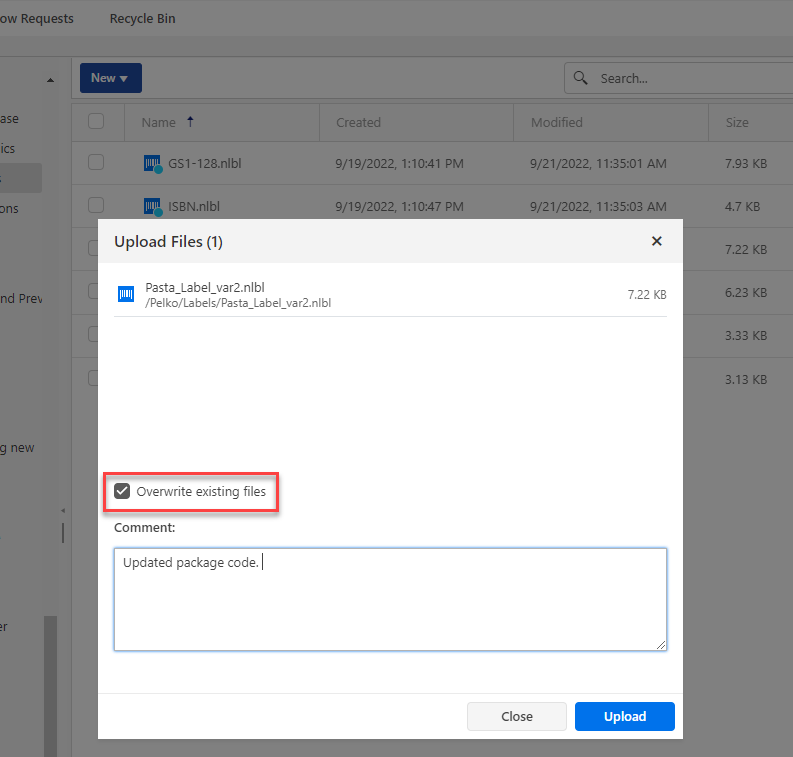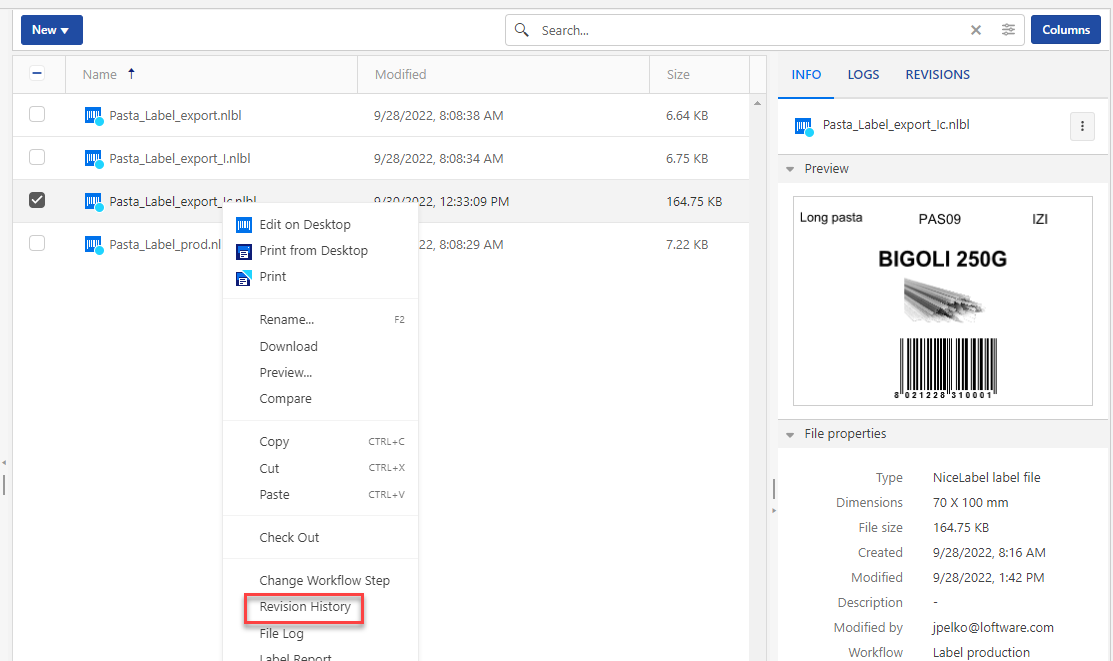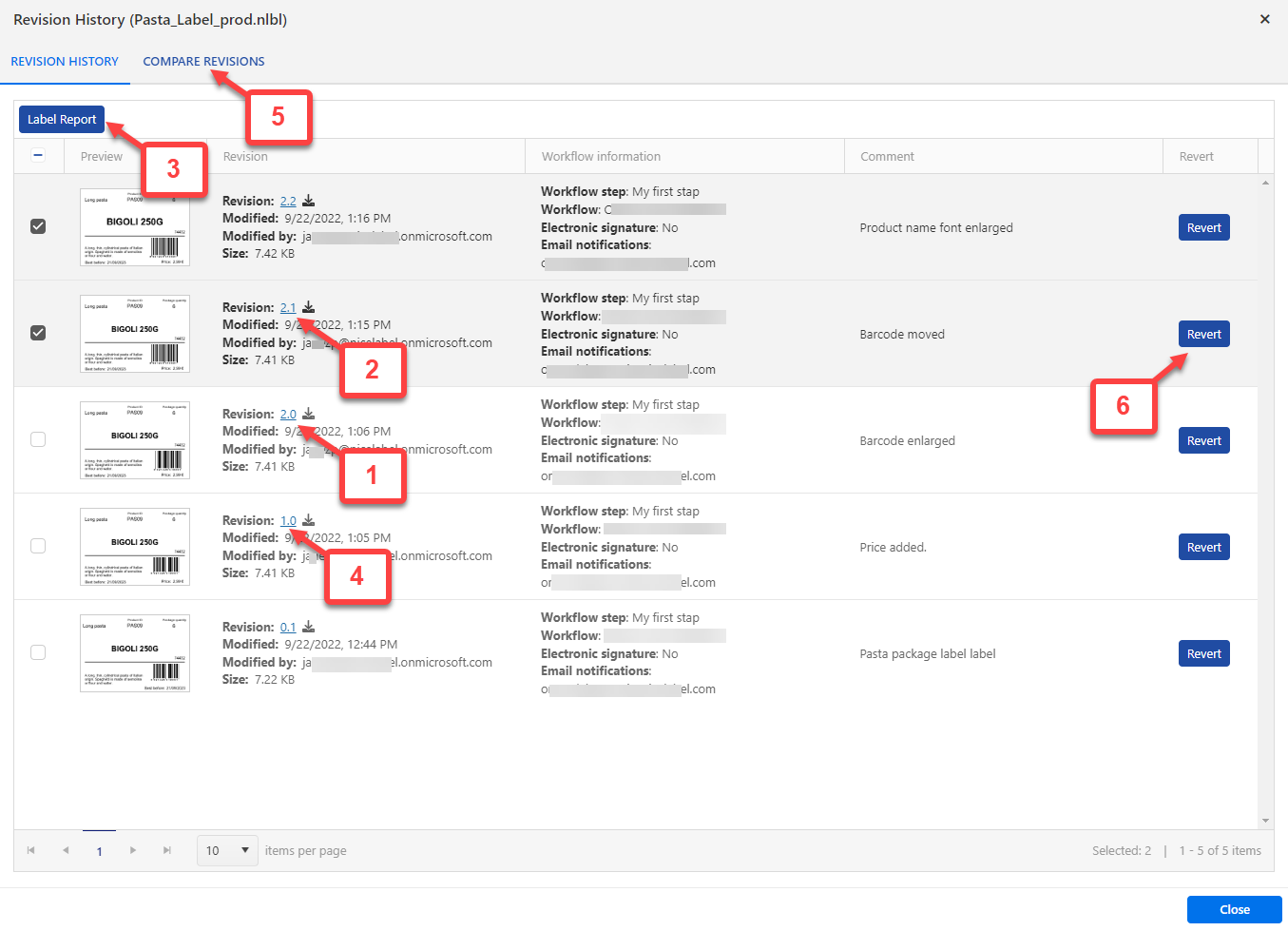Versioning (Revision Control System)

Edit all revisions (versions) of your files.
Track changes made to your files.
Revert to the previous revisions.
When you edit a label file from
Note
To keep all file versions available, enable Versioning for your Control Center first. Go to the
You can also create a new file with the same name and upload it to

Note
By default, label files in
Working with Revisions
The revision control system ensures transparency when reviewing your labels, solutions, or other labeling assets in the
When checking in your files, you can choose between minor and major file versions.
Minor revisions mark smaller user edits when you work on drafts apply smaller corrections.
If you check out your document, then edit your document, then check the document in without promoting it to the next workflow step, Control Center creates a new minor version by default.
Major revisions mark significant changes in your documents made before a label or solution designer assigns files to the approvers. Typically, new major revisions correspond with workflow step promotions.
The administrator can choose which workflow step marks a change in your documents as a new major revision.
Checking out files or folders
Before you can start editing your files in
To allow other users to make changes to the files, you have to check in files or discard check out status. The methods are available in the Designer and Control Center user interface.
To check out your files or folders in Control Center, right-click your selected files or folder, then select
To check out your files or folders in Designer, click the
Warning
If you click
In the
Checking in files or folders
When you are finished editing your files and want to make them available to other users, you must check in your files or folders. You can check in files in Desktop Designer and Control Center.
To check in your files or folders in Control Center, right-click your selected files or folder, then select
To check in your files or folders in Desktop Designer, click
Warning
If your solutions use dynamic values (
Instead of using dynamic values, use global variables or
When you check in your file, the file revision increments, and your entered comment is logged.
File Revision history
Every change to your files are logged in Control Center database. The file revision history includes all events occurring for files, including revisions and workflow changes.
To see all activities for the file, do the following.
Right-click your file, then click
Revision History in the context menu.
You can also select your file, then go to the
Revisions tab and clickFull revision history .
The
Revision history window with all details opens.
1. Major revision number.
2. Minor revision number.
3. Create Label Reports. A label structure report opens in a new browser tab Label report includes meta information about your label including the graphical preview, and a list of all label objects and variables. You can also download label report as XML file.
4. Download the label file. You can download local copies of all existing label revisions from
Documents to your computer. Open your downloaded copies in Desktop Designer and use them to create new revisions.5. Comparing label files all revisions. You can graphically compare the changes from one document revision to another.
6. Revert the current revision to the selected revision. You can revert files to any of their previous revisions. This action copies the selected file revision and adds it as the latest (current) revision.
Note
Reverting to label revision is reserved for access roles with Read/Write permissions for the current folder. See how to set access permissions for folders in the section Folder Permissions.
You can also preview any revision of your label file. Use this feature to avoid opening labels in Desktop Designer.
Requesting Label Revisions
In some cases, you might want to use some older label revisions in your Automation or PowerForms solutions.
Note
You can open and edit files depending on your Access Role. Access Roles are based on user permissions.
If you request a file without specifying any revision, the latest available revision will be used in your printing solution.
If you have read/write access to the files, you can open the files with the last revision.
If you have read-only access to the file, you get:
The last revision (if the folder doesn’t have any workflow enabled).
The last approved-published revision (if the folder is assigned to the workflow process).
To request a specific revision in your printing solution, provide the revision as a parameter after the file name. For example, to request revision 10 of the file pasta.nlbl, use the syntax:

Warning
Users without permission to use older revisions will get an error message when running solutions with older revisions.
To request a specific revision, provide it as a parameter after the file name.
To request the last published revision of file pasta.nlbl, use the syntax:
If no file revision is approved, your solution will show the error message.